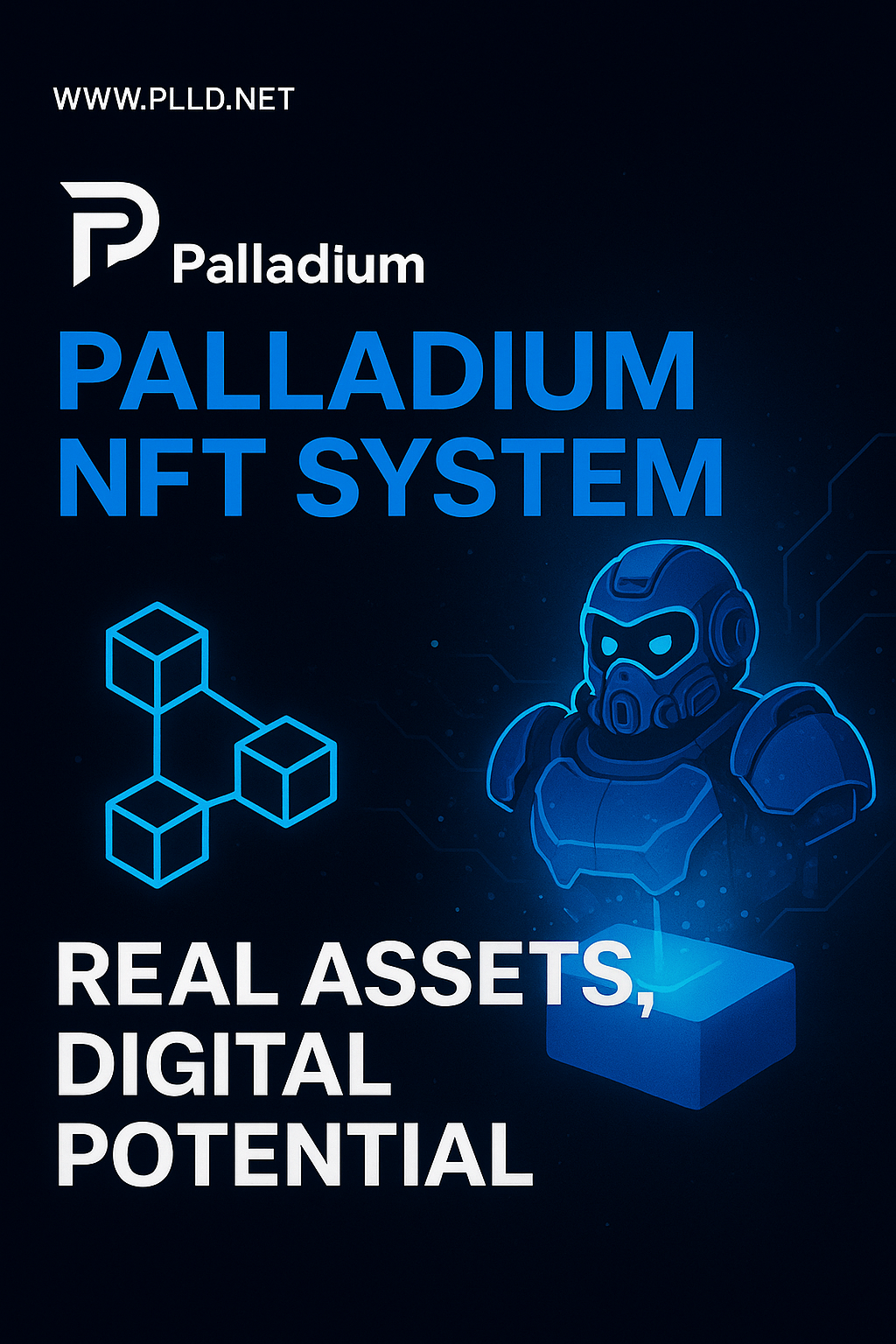The Palladium NFT System forms a central pillar of the Palladium Network (PLLD) — a next-generation Web3 ecosystem combining real estate-backed assets, staking, arbitrage trading, and cross-chain swaps. Its core vision is to provide users with both stability and sustainable growth through fractional ownership of tokenized real estate.
Core Concept
The system integrates two high-performance mechanisms to create a balanced financial model:
Arbitrage Trading: An AI-powered engine continuously monitors over 15 exchanges to exploit price differences across markets. This automated strategy aims to deliver reliable yields, with historical performance showing a steady ROI over the past year.
Real Estate-Backed NFTs: Properties are tokenized into fractionalized NFTs, allowing users to own shares of tangible real estate. Holders can earn income from rental yields or capital appreciation, while benefiting from blockchain transparency and liquidity.
Why It Matters
Reduced Volatility: By linking NFTs to real-world assets, Palladium mitigates typical crypto market fluctuations.
Passive Income: Investors can earn from real estate revenue streams without the administrative complexity of property ownership.
Inclusive Ownership: Fractional NFTs democratize access to real estate, enabling participation from a global audience.
How It Works
Token Launch: The PLLD token, launched on March 19, serves as the foundation of the ecosystem, supporting both arbitrage trading and future NFT initiatives.
Arbitrage Returns: Profits from arbitrage activities are redistributed into the ecosystem, strengthening token value and liquidity.
NFT Platform Rollout: According to the roadmap, the Real Estate NFT platform will launch in Q4, allowing users to purchase fractionalized NFTs tied to real-world properties and begin earning passive income.
Strategic Vision & Ecosystem
Palladium’s NFT initiative is part of a larger interconnected ecosystem, including:
- PLLD Token – The utility core of the ecosystem.
- Arbitrage Engine – AI-driven trading across multiple exchanges.
- Swap Platform – Cross-chain token swapping for seamless liquidity.
- Staking Program – Providing consistent on-chain yields.
- DAO Treasury – Enabling decentralized governance and reinvestment decisions.
Together, these components form a comprehensive Web3 ecosystem focused on sustainability, scalability, and community-driven growth.
Considerations
While highly promising, the model also presents certain challenges:
Execution Risk: Managing both a live arbitrage system and a tokenized property marketplace requires precision and strong infrastructure.
Market Liquidity: Fractional NFTs depend on healthy secondary markets for long-term value realization.
Regulatory Complexity: Real estate tokenization must align with evolving compliance standards across jurisdictions.
Conclusion
The Palladium NFT System is a pioneering model that merges the reliability of real-world real estate with the transparency and innovation of blockchain. By introducing fractional property ownership through NFTs and leveraging arbitrage-based revenue generation, Palladium Network offers a new paradigm in decentralized investment — one that combines yield, utility, and asset-backed stability under a unified ecosystem.
